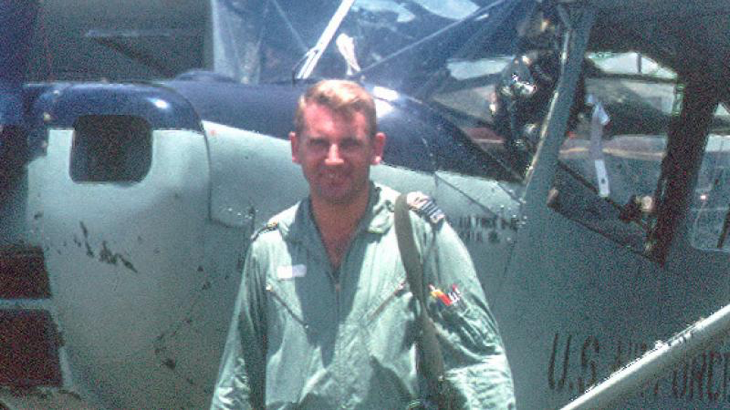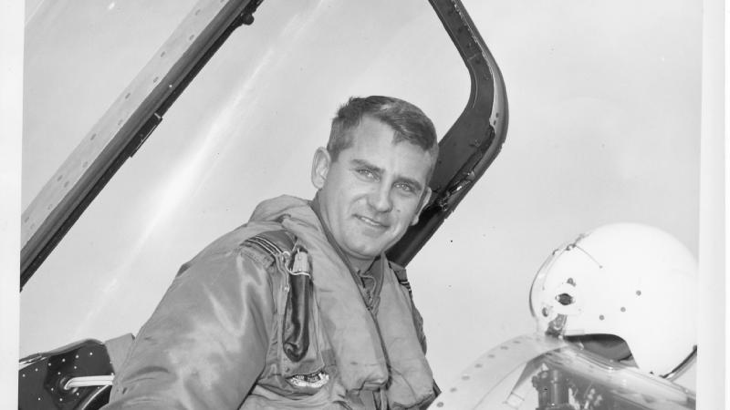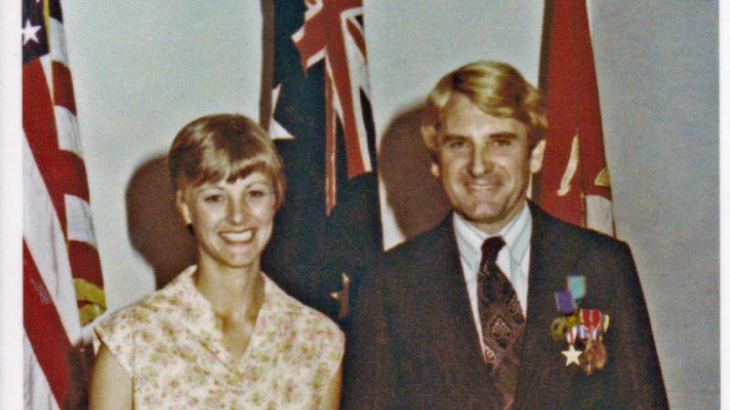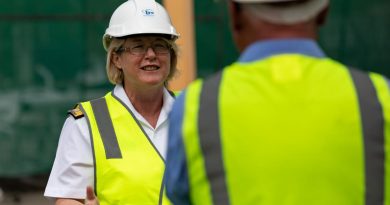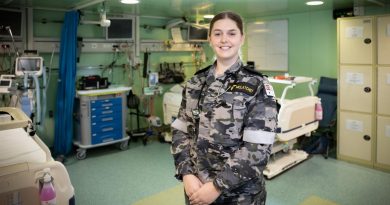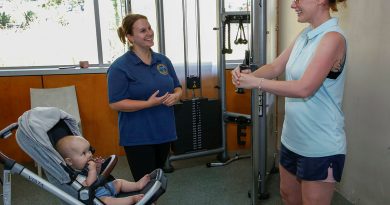A historic bird: flying with a Vietnam War pilot
Share the post "A historic bird: flying with a Vietnam War pilot"

The South Vietnamese sky was a smoky orange as dusk approached in July of 1968. The buzz of a United States Air Force (USAF) O-1 Bird Dog grew louder as it flew metres from the tree tops, looking for enemy targets, at the height of the Vietnam War.
CAPTION: Flight Lieutenant Garry Cooper (retd) during the Vietnam War in front of a US Air Force O-1 Bird Dog. Story by Flight Lieutenant Greg Hinks.
The Bird Dog was piloted by Flight Lieutenant (retd) Garry Cooper, now 85, one of 36 RAAF forward air control (FAC) pilots to fly with USAF in one of the most dangerous deployments of the war.
“Basically the role of the FAC was to detect targets and direct fighter-bombers and artillery onto them to give relief to ground forces in close contact with the enemy,” Mr Cooper said.
“In Saigon we were working within 75 metres of friendly forces and (our) further roles were many; reconnaissance of suspected enemy positions, flying low ahead of road convoys to flush out the enemy, or simply flying low over areas to tempt the enemy to fire at you giving away their presence.
“Generally though, the enemy were very conscious of this and would avoid firing at FAC aircraft until they were sure the FAC knew they were there, then the first and primary objective of the enemy was to take out the FAC.
“Although the task was dangerous, this became a way of life and as long as you did not plan on anything tomorrow, life was good.”
CAPTION: Flight Lieutenant Garry Cooper (retd) in a RAAF Mirage aircraft.
While Mr Cooper flew Sabre and Mirage aircraft for RAAF, deploying to Vietnam in a FAC role supporting the US Army’s 9th Infantry Division was a new concept for Australian operations.
“We practised ground attack with both the Sabre and Mirage but had no exposure to FAC operations,” Mr Cooper remembered.
“To be ‘on the other end’ so to speak, rounded off the ground attack experience and made one aware of the whole Army/ Air Force co-operation procedures.
“The O-1 was ideally suited for the job, as you were right in close to the target and could hear where the ground fire was coming from, before holes appeared in the aircraft. Higher speed FAC aircraft had their disadvantages as some of the senses were limited.”
Even though, on August 18, 1968, Mr Cooper survived after being shot down while flying in a command and control helicopter over the Mekong Delta, a mission that stands out for him came from one of the bloodiest campaigns of the Vietnam War – the May Offensive in Saigon.
“This was not the usual jungle environment, but in the streets of Saigon,” Mr Cooper recounted.
“During that seven-day period, I did 68 hours of flying, 16 hours in one 24-hour period, putting in 40 airstrikes as well as artillery.”
In addition, he served many hours in the Tactical Operations Centre, as well as air liaison officer duties on the command helicopter.
“The destruction was incredible and to witness the gratitude of the Army personnel who were saved is something that is indelible in my mind as the Australian Task Force met the retreating enemy forces from this Saigon battle at ‘Coral’,” he said.
Mr Cooper is humble about the honours and awards he received from his time in Vietnam, including the Distinguished Flying Cross, and is the highest-awarded RAAF veteran from the conflict.
CAPTION: Flight Lieutenant Garry Cooper (retd) and wife Jean at a US medal ceremony in 1981.
Recognition for gallantry included the United States awarding Mr Cooper the Silver Star and three US Distinguished Flying Crosses for heroism. He was recommended for the Congressional Medal of Honour, but ineligible due to being a non-US citizen. He was awarded dual US Air Force Crosses; the second-highest military decoration, of which only 200 have ever been awarded.
These were the first dual US Service Crosses awarded to a non-US citizen since 1918, making Mr Cooper the highest-awarded foreigner under the US honours and awards system.
“It was just circumstances that had me there in 1968, during the bloodiest year of the Vietnam War, on a major infiltration route from the Ho Chi Minh Trail, so I was placed in the way of more action than normal,” Mr Cooper said.
“On average we had direct contact with the enemy every few days. The awards were a by-product of doing my job to the best of my ability and not getting killed.”
With this year marking the 50th anniversary of the proclamation to end Australia’s involvement in the Vietnam War, the Australian War Memorial is remembering the Australian FAC pilots with the unveiling of an OV-10 Bronco aircraft.
Mr Cooper, who didn’t fly OV-10 Broncos in combat but did fly them as a combat instructor at the end of his Vietnam tour, thinks the aircraft unveiling, is a fitting tribute to the forward air controllers.
“This OV-10 is a fitting memorial to the 36 RAAF forward air controllers who did a unique and important service,” Mr Cooper said.
“Let us not forget other special tasks men fulfilled, like the RAN Emu Helicopter Flight, the Tunnel Rats and RAN divers. All must be remembered.”
The unveiling of the OV-10 Bronco aircraft, remembering the 36 FAC pilots from the Vietnam War, will take place on Vietnam Veterans’ Day, August 18, at the Australian War Memorial.
.
.

.
.
Share the post "A historic bird: flying with a Vietnam War pilot"

